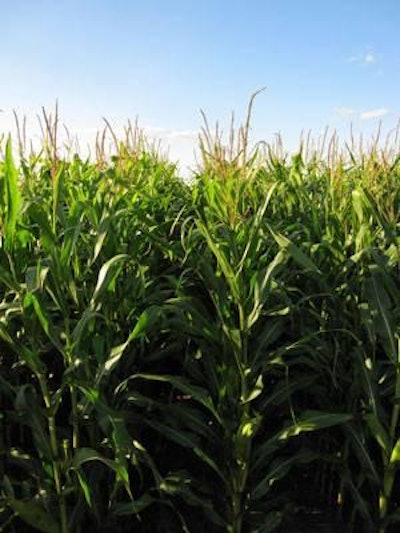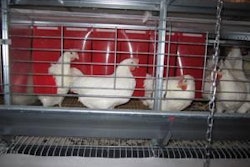
Corn prices have been driven to new heights by increased demand from the U.S. ethanol industry. According to some estimates, U.S. ethanol production in 2011 will consume an amount of corn equal to nearly 40% of last season’s corn crop. The price of a commodity will rise as demand for the item increases or as supply of the item decreases. As supply of corn in storage dwindled this summer, users of corn not only had to pay higher prices for the corn but also had to move corn greater distances to reach their mills.
To combat the high price and scarcity of corn, many egg producers in the Midwest have turned increasingly to distillers dried grains with solubles to replace a portion of the corn and soybean meal in their birds’ rations.
DDGS have been around for centuries as a byproduct of the production of beer and distilled spirits. Each 56-pound bushel of corn will produce 2.8 gallons of ethanol and 17.5 pounds of DDGS. Production of DDGS in the U.S. has more than doubled since 2007, along with the production of ethanol for fuel. According to the Renewable Fuels Association, 13.2 billion gallons of ethanol was produced in the U.S. last year along with approximately 41 million tons of DDGS, nearly one quarter of which was exported outside the U.S.
The price ratio for DDGS and corn in Iowa has fallen each year since 2007, according to the U.S. Department of Agriculture's Agricultural Marketing Service data. The decline in the ratio of the price of DDGS to corn from 0.97 in 2007 to 0.81 in 2011 has increased the economic incentive to substitute DDGS for corn in layer rations. Typical inclusion rates for DDGS in layer rations is 5% to 12%, but research suggests that higher inclusion rates can be used without harming bird performance.
Feeding higher concentrations of DDGS
The percent of protein in DDGS is about three times that of corn because fermentation uses the starches and sugars and concentrates the protein, fiber and fat. DDGS are high in total phosphorous and nitrogen compared to corn, so the amount of inorganic phosphorous added to hen diets can be reduced if DDGS are included.
Dr. Sheila Purdum, University of Nebraska-Lincoln, reported on her research on DDGS and enzyme inclusion into layer diets at the Midwest Poultry Federation Convention this year. She said that exogenous enzymes, such as phytase and combinations of amylase, protease and carbohydrase, are incorporated more frequently into poultry diets, especially during times of high commodity prices. The focus of her research has been on the action of these enzymes in diets with a high level of DDGS.
Purdum said that in experimental diets with DDGS, synthetic lysine and a fat blend were added and dicalcium phosphate supplementation was decreased. In the initial studies, results indicated that feeding diets with DDGS at levels of up to 25% had no negative effect on egg production parameters.
Benefits of enzyme use
In further studies utilizing exogenous enzymes such as phytase and combinations of amylase, protease and carbohydrase, inclusion rates of up to 30% DDGS in layer diets were shown to support good levels of production. Purdum concluded that DDGS can be included at relatively high levels in diets for pullets and laying hens when the diet is formulated to balance amino acid requirements. She said that dicalcium phosphate addition to layer diets can be reduced with DDGS inclusion to further reduce feed cost. Exogenous enzyme supplementation can significantly reduce the cost of diets for laying hens with or without inclusion of DDGS.
DDGS availability
A number of reasons have been cited in the literature why poultry producers might choose not to utilize DDGS in rations. Some of them are variability of nutrient values in the product, distance from DDGS source, concerns over mycotoxin concentration in DDGS, and concerns about shelf life of DDGS. According to RFA data, nearly one quarter of U.S. DDGS production was exported in 2010, and the price of DDGS has fallen relative to the price of corn over the last five years. With corn prices expected to be high for at least another 12 months, DDGS may offer an opportunity for all U.S. egg producers, not just those in the Midwest, to lower the cost of their rations compared to the cost of a traditional corn and soybean meal ration.


















